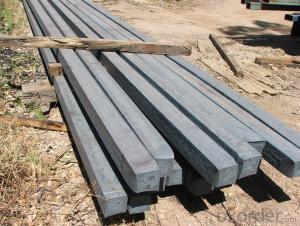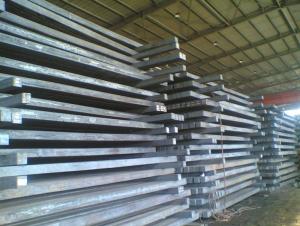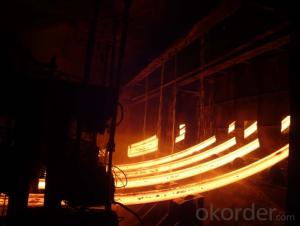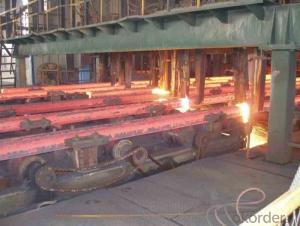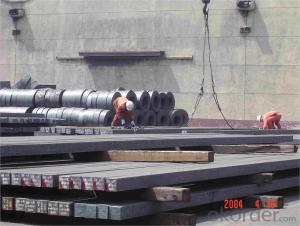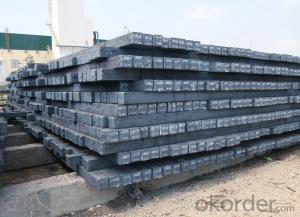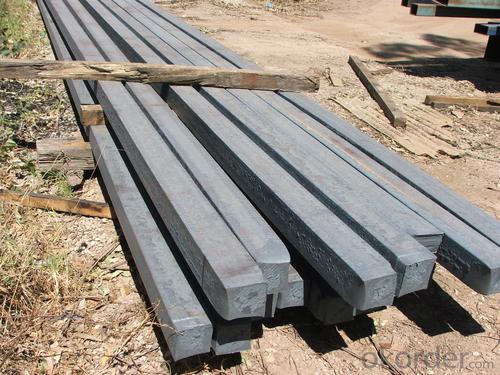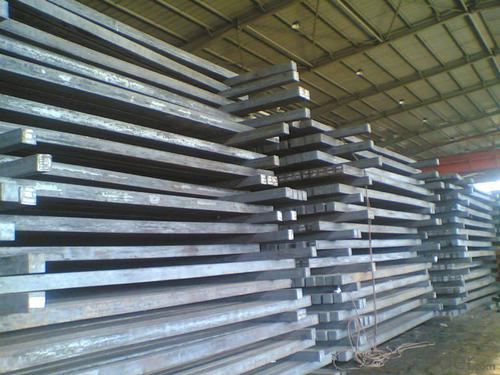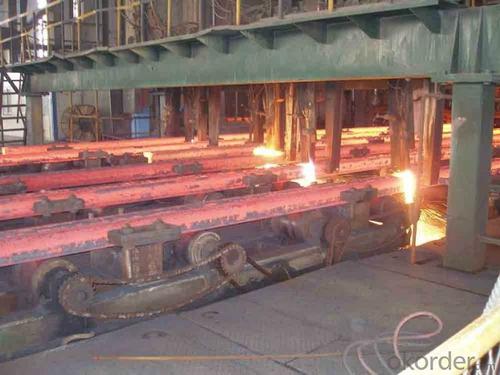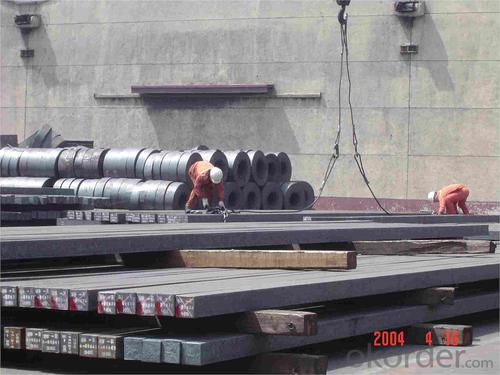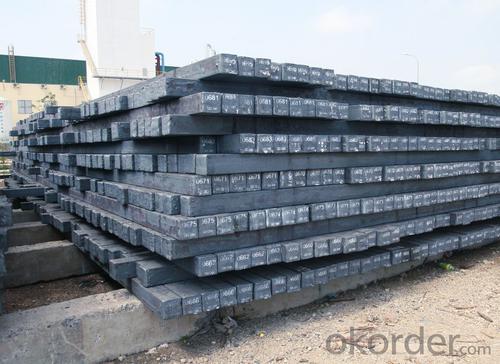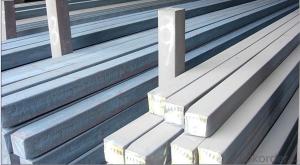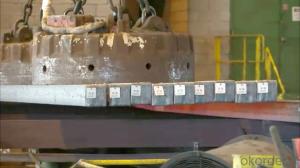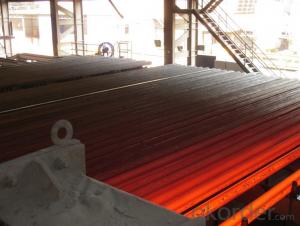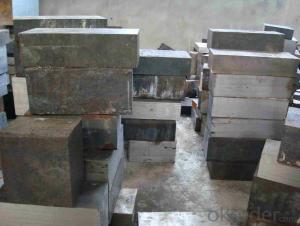Q235/3SP 180MM Blast Furnace Hot Rolled Steel Billet
- Loading Port:
- Tianjin
- Payment Terms:
- TT OR LC
- Min Order Qty:
- 2000 m.t.
- Supply Capability:
- 30000 m.t./month
OKorder Service Pledge
OKorder Financial Service
You Might Also Like
Description of Q235/3SP 180MM Blast Furnace Hot Rolled Steel Billet
Our hot dip galvanised steels consist of a steel substrate with a metallic zinc coating applied by means of a continuous hot dip galvanising process. Metallic zinc coatings are available in steel grades ranging from steel for bending and deep drawing applications, to structural steels and high yield strength steels.
A glossy surface finish obtained under specific skin-pass conditions (either non-skin-passed or skin- passed with smooth cylinders to obtain low roughness) can be provided if required at time of enquiry.
Advantage of Q235/3SP 180MM Blast Furnace Hot Rolled Steel Billet
Uncoated CR steel sheet With the features of in line with the international highest standards in demension and shape, excellent surface finish and properties, the products are mainly used in home appliance and automobile industries.
Galvanized steel sheet(include HDG and EG)
With the features of good corrosion resistance, the products are mainly used in automobile, home appliance, electronics, building and machinery manufacture industries, etc.
Precoated steel sheet With the features of enviromental protection and good processablility, long lasting surface durability, rich in colors, the products are maily used in building, home appliance and furniture industries, etc.
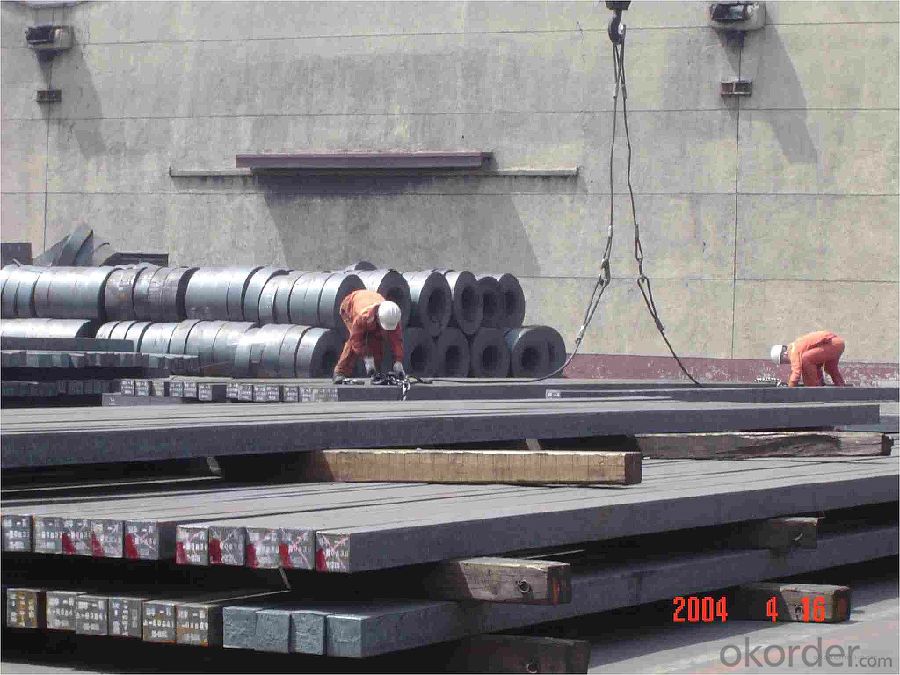
Applications of Q235/3SP 180MM Blast Furnace Hot Rolled Steel Billet
Our hot dip galvanised steels can be used in a very wide range of applications for industrial markets, both indoors and outdoors. Some of the most common applications are:
Building: wide sections for roofing and cladding, doors, door frames, metallic ceilings, partitions, structural members etc
Domestic appliances: all appliances for this sector (both white and brown goods) are manufactured with hot dip galvanised steels
Miscellaneous: electrical cabinets, aeraulic components, air conditioners, road signs etc
Zinc hot dip galvanised steel is suitable for contact with foodstuffs under certain conditions, as specified in European directive 89/109/EEC and French standard NF A 36-712-1. Please contact us for further information on this subject.
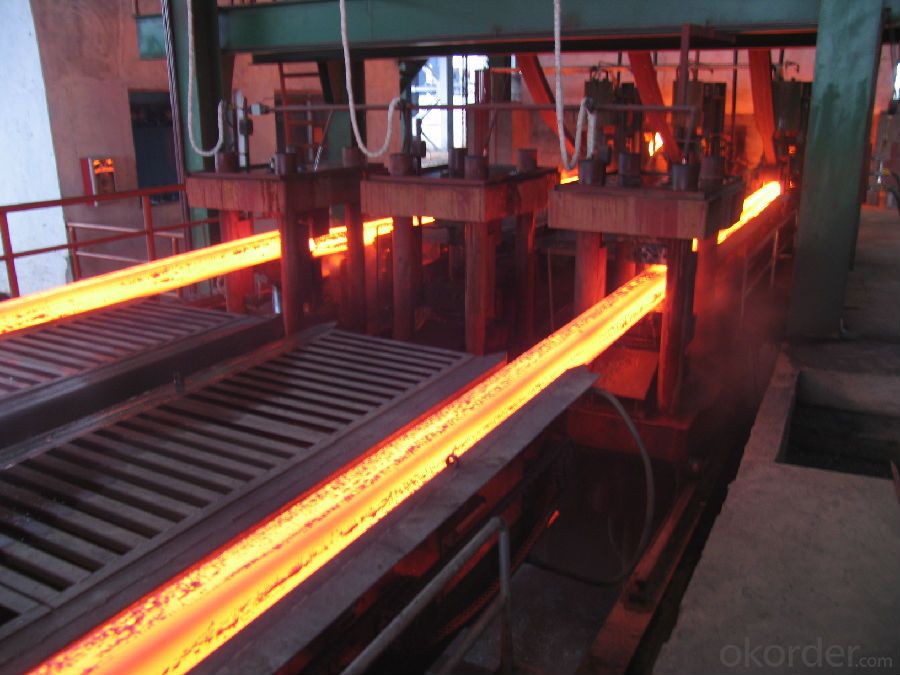
Specifications of Q235/3SP 180MM Blast Furnace Hot Rolled Steel Billet
Quality | Q/BQB 440-2003 | JIS G3312-1994 JIS G3321 | EN 10326-2004 | ASTM A653-02a |
EN 10327-2004 | (BASE PLATE) | |||
(BASE PLATE) | ||||
Commercial Steel | DC51D | SGCC SGLCC | DX51D+Z DX51D+AZ | CS Type A/B/C |
Forming Steel | St01,St02,St03 | SGCD1 SGLCD1 | FS Type A, Type B | |
Drawing | DC52D /DC53D | - | DX52D+Z DX52D+AZ | DDS TYPE A/C |
Steel | DX53D+Z DX53D+AZ | |||
Structural | S280GD (StE28) | SGC400 SGLC400 | S280D+Z DX54D+AZ | SS275 |
Steel | S350GD (StE34) | SGC440 SGLC440 | S350D+Z S350D+AZ | SS340 Class1 |
FAQ of Q235/3SP 180MM Blast Furnace Hot Rolled Steel Billet
We have organized several common questions for our clients,may help you sincerely:
1. How Can I Visit There?
Our company is located in Tianjin City, China, near Beijing. You can fly to Tianjin Airport Directly. All our clients, from home or aboard, are warmly welcome to visit us!
2. How Can I Get Some Sample?
We are honored to offer you sample.
3. Why choose CNBM?
Our delivery time about 15-20days for standard sizes, if you have other requirements like hardness, quanity and width ,it is about 20-40days. But don't worry we also try our best for the delivery time ,because time longer and our cost is higher.
- Q: How are steel billets recycled or reused?
- Steel billets, which are semi-finished metal products, are commonly recycled or reused in various ways. One common method of recycling steel billets is through the process of electric arc furnace (EAF) steelmaking. In this method, the billets are melted down in an electric arc furnace and then used to produce new steel products. This process not only allows for the efficient use of resources but also helps in reducing greenhouse gas emissions and energy consumption compared to primary steel production. Steel billets can also be reused in various industries such as construction, automotive, and manufacturing. They can be reshaped and reformed to create new steel products or used as raw material for forging, rolling, or extrusion processes. By reusing steel billets, the industry can reduce the demand for newly manufactured steel and conserve natural resources. Additionally, steel billets can be recycled through a process called continuous casting. In this process, the molten steel is poured into a continuous casting machine, which produces a solid billet. These billets can be further processed into various steel products such as bars, rods, or wire through hot rolling or cold rolling processes. Furthermore, steel billets can be melted and recast into other forms through the process of remelting. This can be done using technologies like induction melting or vacuum arc remelting, which help in purifying the steel and obtaining desired chemical and mechanical properties. Remelting allows for the production of high-quality steel billets that can be used in specialized applications such as aerospace, defense, or medical industries. In conclusion, steel billets are recycled or reused through various processes such as electric arc furnace steelmaking, continuous casting, remelting, and reshaping. These methods not only contribute to the sustainability of the steel industry but also help in conserving resources, reducing emissions, and meeting the growing demand for steel products.
- Q: How are steel billets used in the manufacturing of food processing machinery?
- Food processing machinery relies on steel billets for the production of various components and structures. These billets undergo heating and rolling processes to form steel bars, rods, or sheets of different shapes and sizes. These steel products are then utilized in the construction of the framework, body, and other parts of the machinery. Steel's high strength and durability make it an ideal choice for food processing machinery, which often operates in harsh conditions and requires resistance to corrosion, wear, and high temperatures. Steel billets are carefully selected for their quality and suitability for the intended application. When constructing food processing machinery, steel billets are employed in fabricating crucial components like cutting blades, mixing paddles, conveyor belts, and grinding plates. These components are vital for the efficient processing and handling of food products, ensuring consistent quality and safety. Furthermore, steel billets are also used in manufacturing structural supports, frames, and housing for machinery. These structures provide the necessary stability, rigidity, and support to ensure the proper functioning and longevity of the food processing equipment. In conclusion, steel billets play a vital role in the manufacturing of food processing machinery as they provide the essential raw material required to create durable, reliable, and efficient equipment. The quality and characteristics of steel contribute to the performance, safety, and hygiene standards demanded in the food processing industry.
- Q: How are steel billets used in the manufacturing of construction formwork?
- Steel billets are used in the manufacturing of construction formwork as they are often shaped and molded into various components, such as beams or columns, that provide essential structural support. These billets are strong and durable, ensuring the formwork can withstand the weight and pressure of poured concrete. Additionally, their malleability allows for customization, enabling the formwork to be precisely designed to meet the specific requirements of each construction project.
- Q: How are steel billets used in the production of mining conveyors?
- Steel billets are a crucial component in the production of mining conveyors. Mining conveyors are used to transport bulk materials, such as coal, ore, and gravel, over long distances. These conveyors need to be sturdy and durable to withstand the harsh conditions of a mining environment. Steel billets serve as the raw material for manufacturing conveyor rollers. Conveyor rollers are an essential part of the conveyor system as they support and guide the conveyor belt. Steel billets are first heated and then rolled into desired shapes to create the conveyor rollers. The heating process helps in improving the steel's malleability, making it easier to shape. The use of steel billets in the production of mining conveyors ensures that the rollers have high strength and resistance to wear and tear. The steel's properties, such as its toughness and hardness, make it ideal for withstanding heavy loads and abrasive materials. Furthermore, steel billets can be customized to meet specific requirements. Different mining operations may have different needs in terms of conveyor dimensions, load capacities, and environmental conditions. Steel billets allow manufacturers to produce conveyor rollers of various sizes and specifications, ensuring that they are tailored to the specific needs of each mining operation. In summary, steel billets play a vital role in the production of mining conveyors by providing the raw material for manufacturing conveyor rollers. These rollers are essential for supporting and guiding the conveyor belt, ensuring efficient and reliable transportation of bulk materials in a mining environment. The use of steel billets ensures that the conveyor rollers are strong, durable, and capable of withstanding the harsh conditions of the mining industry.
- Q: What are the potential applications of steel billets in the agricultural sector?
- The agricultural sector can benefit greatly from the various potential applications of steel billets. One primary use of steel billets in agriculture involves their utilization in the manufacturing of farm equipment and machinery. Plows, cultivators, and seeders, which are essential for tilling the soil, planting seeds, and maintaining agricultural land, can be produced using steel billets to create durable and sturdy components. Steel billets also find usefulness in the construction of storage structures on farms. Due to its strength and durability, steel is an ideal material for constructing grain silos, barns, and sheds. These structures provide long-lasting and reliable solutions for storing crops, livestock, and equipment. Furthermore, steel billets can be used to fabricate fences and gates for animal enclosures. Steel fences offer superior strength and security, ensuring the safety of farm animals and preventing them from wandering off. These fences are also resistant to corrosion and capable of enduring harsh weather conditions. Moreover, steel billets can be employed in the construction of irrigation systems and water management infrastructure on farms. Steel pipes and fittings are commonly used to transport water from a source to the fields, promoting proper irrigation and efficient water distribution. Lastly, steel billets can be employed in the production of machinery used for processing agricultural products. Grain mills, threshers, and sorting machines, for example, can be manufactured with steel components, aiding in the processing and packaging of crops. Overall, the potential applications of steel billets in the agricultural sector are extensive and diverse. From farm equipment and storage structures to fencing and irrigation systems, steel billets play a vital role in enhancing efficiency, durability, and productivity in agriculture.
- Q: What are the different types of steel billet rolling mill equipment?
- There are several different types of steel billet rolling mill equipment used in the manufacturing process. Some of the most common types include: 1. Reheating Furnaces: These are used to heat the steel billets to the required temperature before rolling. They use fuel or electricity to generate heat and ensure that the billets are at the optimal temperature for the rolling process. 2. Roughing Stands: These stands are responsible for reducing the size of the billets and preparing them for the subsequent rolling passes. They have multiple rolls that gradually decrease the thickness of the billets as they pass through. 3. Intermediate Stands: Once the billets have been roughed, they pass through the intermediate stands. These stands further reduce the thickness and shape the billets into the desired profile. 4. Finishing Stands: The billets then enter the finishing stands, which have a set of rolls that give the final shape and size to the steel. These stands are responsible for achieving the precise dimensions and surface finish required for the end product. 5. Cooling Beds: After the rolling process, the steel billets need to be cooled down gradually to prevent any distortion or cracking. Cooling beds provide a controlled environment for the billets to cool down before further processing. 6. Shearing Machines: These machines are used to cut the rolled steel billets into desired lengths. They can be hydraulic or mechanical, and they ensure precise and accurate cutting according to the specifications. 7. Straightening Machines: Sometimes, the rolled billets may have slight deformations or unevenness. Straightening machines are used to correct these imperfections and ensure that the steel is straight and ready for further processing. 8. Inspection Equipment: Various inspection equipment, such as ultrasonic testers, are used to check the quality and integrity of the rolled steel billets. These equipment ensure that the final product meets the required standards and specifications. Overall, these different types of steel billet rolling mill equipment work together to transform raw steel billets into finished products with the desired shape, size, and quality. The selection and arrangement of these equipment depend on the specific requirements of the manufacturing process and the end product.
- Q: Can steel billets be used for decorative purposes?
- Indeed, steel billets have the potential to serve as decorative elements. Steel billets act as the primary material utilized in an array of applications within the steel industry, including the creation of ornamental goods. Through the implementation of diverse techniques like forging, casting, or machining, steel billets can undergo a metamorphosis into visually pleasing decorative pieces, such as sculptures, ornamental gates, furniture, architectural components, and more. Steel's adaptability and longevity make it a favored choice for decorative purposes, as it can be molded into intricate designs and endure outdoor conditions. Furthermore, steel can be further enhanced with a variety of finishes, like painting, powder coating, or patina, to heighten its visual allure and complement a wide range of styles or aesthetics.
- Q: What are the different methods of steel billet cutting and machining?
- Steel billets can be cut and machined using several different methods, each with its own advantages and applications. Some of the most commonly used methods include: 1. Sawing: To cut through a steel billet, a saw blade is employed. This method is relatively straightforward and cost-effective, making it suitable for cutting large quantities of billets into desired lengths. However, it may result in rough edges and necessitate additional finishing processes. 2. Flame cutting: Also known as oxy-fuel cutting, this method involves using a combination of fuel gas and oxygen to create a high-temperature flame that melts and cuts through the steel billet. It is effective for cutting thick billets and can achieve a high level of precision. Flame cutting can be carried out manually or using automated machines. 3. Plasma cutting: This method utilizes a plasma torch to generate a high-velocity jet of ionized gas that melts and cuts through the steel billet. It is particularly effective for cutting through thick materials and intricate shapes and curves. Plasma cutting provides high cutting speeds and excellent precision. 4. Waterjet cutting: In this method, a high-pressure jet of water mixed with abrasive particles is used to cut through the steel billet. Waterjet cutting is versatile and can handle various materials, including steel, without generating heat-affected zones or causing distortion. It is ideal for cutting complex shapes and thin materials. 5. Laser cutting: Laser cutting involves the use of a high-powered laser beam to melt and vaporize the steel billet along a predefined path. This method offers exceptional precision and enables intricate and complex cuts. Laser cutting is commonly used for thin to medium thickness billets and is suitable for both small-scale and industrial applications. In addition to these cutting methods, there are various machining processes that can be applied to steel billets, such as milling, turning, drilling, and grinding. These processes involve removing material from the billet to achieve desired shapes, dimensions, and surface finishes. The choice of machining method depends on factors such as the complexity of the part, required tolerances, and production volume. Overall, the different methods of steel billet cutting and machining provide a range of options for manufacturers to effectively shape and process steel billets according to their specific requirements.
- Q: What is the average price of steel billets?
- The average cost of steel billets may vary due to various factors such as market conditions, supply and demand dynamics, and the grade and quality of the billets. It is crucial to acknowledge that global economic influences, such as raw material expenses, energy prices, and trade policies, can cause fluctuations in the average price. To obtain an accurate understanding of the average steel billet price, it is advisable to consult industry reports, trade publications, and market analysis platforms that offer updated information on steel prices. Additionally, seeking advice from steel suppliers and manufacturers or engaging in negotiations with multiple sources can aid in determining the prevalent average price within a specific region or market.
- Q: What are the different surface finishes available for alloy steel billets?
- There are several different surface finishes available for alloy steel billets, depending on the specific requirements and applications. Some of the common surface finishes include: 1. Hot rolled: This is the most common surface finish for alloy steel billets. It is achieved by rolling the steel billet at a high temperature, which results in a rough and scaled surface. 2. Cold drawn: This surface finish is achieved by pulling the steel billet through a die at room temperature. It provides a smooth and polished surface, with improved dimensional accuracy and surface quality. 3. Peeled: In this process, a layer of material is removed from the surface of the steel billet using a peeling tool. It results in a smooth and shiny surface finish, with improved surface quality and dimensional accuracy. 4. Ground: This surface finish is achieved by grinding the surface of the steel billet using abrasive wheels or belts. It provides a smooth and uniform surface finish, with improved surface quality and dimensional accuracy. 5. Turned: In this process, the steel billet is rotated against a cutting tool, which removes material from the surface and creates a smooth and polished finish. It is commonly used for high precision applications where a smooth surface finish is required. 6. Polished: This surface finish is achieved by polishing the steel billet using abrasive compounds and buffing wheels. It provides a mirror-like finish, with improved aesthetic appeal and corrosion resistance. It is important to select the appropriate surface finish based on the specific requirements of the application, such as dimensional accuracy, surface quality, aesthetic appeal, and corrosion resistance.
Send your message to us
Q235/3SP 180MM Blast Furnace Hot Rolled Steel Billet
- Loading Port:
- Tianjin
- Payment Terms:
- TT OR LC
- Min Order Qty:
- 2000 m.t.
- Supply Capability:
- 30000 m.t./month
OKorder Service Pledge
OKorder Financial Service
Similar products
Hot products
Hot Searches
Related keywords
